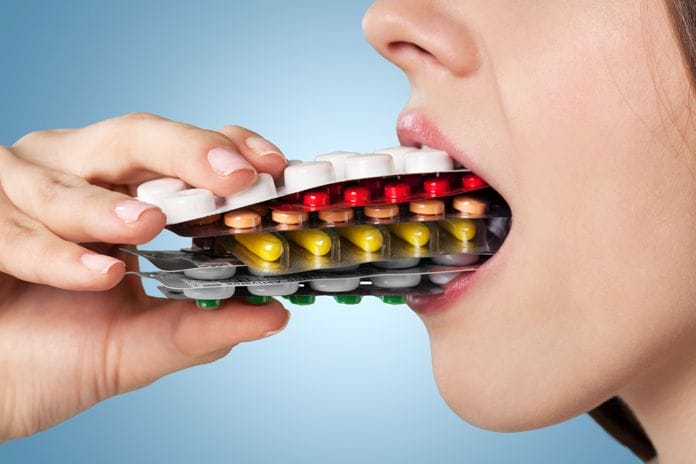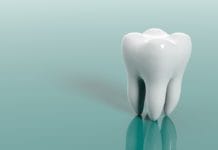To premedicate or not to premedicate, that is the question, and it has become an increasingly difficult question to answer. New clinical research and recommendations are colliding with long-held, but outdated, protocols to create the perfect storm of confusion for clinicians. Add to that the controversy regarding the overuse of antibiotics, and it becomes apparent that this issue is remarkably complex. So, how do we cut through the confusion and get to the bottom of this mess?
First and foremost, clinicians should be consulting the most up to date clinical research and recommendations. By allowing premedication protocols to be influenced by patient requests, or adhering to outdated practices merely out of habit, we could be doing more harm than good. A large percentage of dentists and physicians are still prescribing prophylactic antibiotics unnecessarily prior to dental treatments. We, as hygienists, see this occurring daily in private practice. Patients that do not meet the recommended criteria for premedication prior to dental treatment are still being prescribed antibiotics in large numbers. Why is this happening and what are the ramifications?
Multiple factors are contributing to this disconnect, including a lack of awareness regarding what the current recommendations are and why. The dental field can be isolating, with most doctors practicing in individual private practice, leading to the news of current treatment protocols traveling slowly. Even when they are aware of the proper protocols, doctors and dentists can also feel obligated to meet patient expectations, and many patients still demand prophylactic antibiotics regardless of whether they are recommended for them. In addition, there is an often unspoken legal undertone to premedication. In a world where malpractice lawsuits are commonplace, many doctors feel it is necessary to premedicate patients in order to cover themselves legally “just in case.”
While the dental field is struggling to catch up and align itself with the proper protocols, patients may be suffering the side effects. The newest research now indicates that the use of prophylactic antibiotics, in many cases, carries a higher risk of ill effects than it is preventing1. This directly opposes what we are taught as medical professionals, that benefits should always outweigh the risks when recommending treatment.
Research reported in 2017 indicates that antibiotic prescriptions issued by dentists for premedication purposes are a significant cause of Clostridium Difficile infections, a dangerous “superbug” causing severe gastric symptoms, within the general community1. These findings were surprising to many in the medical field because antibiotic prescriptions issued by dentists had been largely overlooked2. This is yet another example highlighting the disconnect between the dental field and the medical community as a whole. The threat posed by Clostridium Difficile, and numerous other antibiotic-resistant bacteria, has become increasingly serious in recent years. The medical and dental communities need to work together for the common goal of preventing further antibiotic resistance in the future.
The findings of the above-mentioned research study are especially unfortunate because it was also found that many of the study participants were prescribed these antibiotics unnecessarily2. Furthermore, the prescribing dentists were unaware that the patients had developed a C. difficile infection because most patients do not report gastric symptoms, such as diarrhea, to their dentists. The result is that many dentists are unconcerned with the possibility of serious, and as we now know common, side effects of unnecessary antibiotic dispensing.
Does any of this mean that dentists and physicians should not be prescribing prophylactic antibiotics? Absolutely not! It simply means that clinicians should be aware of the most current protocols and adhere to them. This can be a challenging task considering there have been so many changes so quickly that it can be difficult to keep up with the most current protocols. Many clinicians may even be surprised to hear what the actual recommendations are currently! So, let’s discuss what the current premedication guidelines are for some of the more common medical conditions.
Regarding artificial joint replacements, the consensus is that prophylactic antibiotics are unnecessary for the majority of patients, regardless of the length of time since their surgery. This consensus was reached by a combined panel of dentists and orthopedic surgeons in 2014 after reviewing multiple peer-reviewed studies indicating that there is no correlation between dental procedures and prosthetic joint infections3. The American Dental Association supports these recommendations and indicates that prophylactic antibiotics are only necessary for some patients who exhibit a history of complications with their artificial joint and should be prescribed after consulting with the orthopedic surgeon and ideally by the surgeon4. Yes, you read that correctly, the ADA no longer recommends premedication for the vast majority of prosthetic joint replacement patients. This is currently the most common reason for premedication within the dental field.
For the prevention of Infective Endocarditis, the American Heart Association and The American Dental Association recommend prophylactic antibiotic prescriptions for patients with the following conditions4:
- Prosthetic cardiac valves, including transcatheter-implanted prostheses and homografts; prosthetic material used for cardiac valve repair, such as annuloplasty rings and chords
- History of infective endocarditis
- A cardiac transplant with valve regurgitation due to a structurally abnormal valve
- The following congenital (present from birth) heart disease: unrepaired cyanotic congenital heart disease, including palliative shunts and conduits
- Any repaired congenital heart defect with residual shunts or valvular regurgitation at the site of or adjacent to the site of a prosthetic patch or a prosthetic device
Conditions such as Mitral Valve Prolapse and Heart Murmurs have been long removed from the above list but, surprisingly, patients still continue pre-medicating for these conditions.
There are, of course, many other conditions to be considered when deciding whether a patient should be taking prophylactic antibiotics including immune deficiency diseases, blood disorders, and cancer patients. The individual recommendations for all conditions are too numerous to discuss within the scope of this article, but each patient should be treated on a case by case basis. Ultimately, the decision to premedicate a patient should be decided based on what will provide the patient with the best balance of benefit to risk.
It is concerning to learn that so many dental and medical clinicians are still treating patients based on outdated guidelines but through education and continued research, this situation can be vastly improved. While premedication decisions are not ultimately up to us, as hygienists, it is still our responsibility to remain educated on the most up to date research and protocols for our patients, so we can all work together to clear up the premedication confusion.
Before you leave, check out the Today’s RDH self-study CE courses. All courses are peer-reviewed and non-sponsored to focus solely on pure education. Click here now.
Listen to the Today’s RDH Dental Hygiene Podcast Below:
SEE ALSO: Why Hygienists Should Take the Blood Pressure of EVERY Patient
RECOMMENDED: The Importance of Knowing a Patient’s Health History
References
- “Outpatient Antibiotics Raise Risk for Acquiring C. difficile Infection in the Community.” Infectious Diseases Society of America, 26 Oct. 2017, idsociety.org/News_and_Publications/IDSA_News_Releases/2017/Pages/Outpatient_Antibiotics_Raise_Risk_for_Acquiring_C__difficile_Infection_in_the_Community.aspx.
- Infectious Diseases Society of America. “Antibiotics for dental procedures linked to superbug infection.” ScienceDaily. ScienceDaily, 6 October 2017. <www.sciencedaily.com/releases/2017/10/171006164847.htm>.
- “The use of prophylactic antibiotics prior to dental procedures in patients with prosthetic joints.” The Journal of The American Dental Association, Thomas P. Sollecito, DMD, FDS RCSEd, Elliot Abt, DDS, MS, MSc, Peter B. Lockhart, DDS, FDS RCSEd, FDS RCPS, Edmond Truelove, DDS, MSD, Thomas M. Paumier, DDS, Sharon L. Tracy, PhD’Correspondence information about the author PhD Sharon L. TracyEmail the author PhD Sharon L. Tracy, Malavika Tampi, MPH, Eugenio D. Beltrán-Aguilar, DMD, MPH, MS, DrPH, Julie Frantsve-Hawley, PhD, Jan. 2015, jada.ada.org/article/S0002-8177(14)00019-1/fulltext?nav=rotatorJanmain.
- “Antibiotic Prophylaxis Prior to Dental Procedures.” American Dental Association, Center for Scientific Information, ADA Science Institute, 14 Sept. 2017, www.ada.org/en/member-center/oral-health-topics/antibiotic-prophylaxis.











